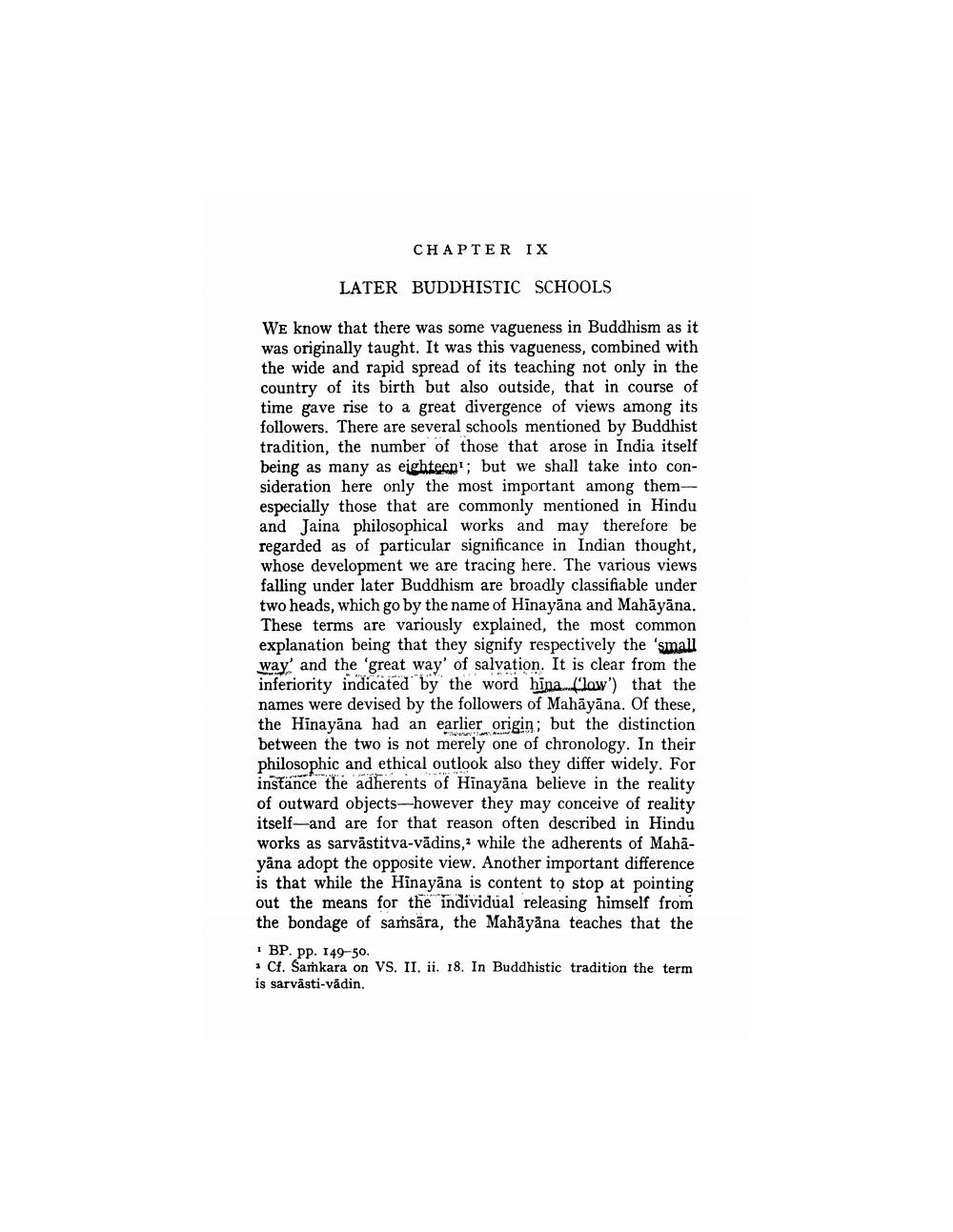________________
CHAPTER IX
LATER BUDDHISTIC SCHOOLS
We know that there was some vagueness in Buddhism as it was originally taught. It was this vagueness, combined with the wide and rapid spread of its teaching not only in the country of its birth but also outside, that in course of time gave rise to a great divergence of views among its followers. There are several schools mentioned by Buddhist tradition, the number of those that arose in India itself being as many as eighteen"; but we shall take into consideration here only the most important among them especially those that are commonly mentioned in Hindu and Jaina philosophical works and may therefore be regarded as of particular significance in Indian thought, whose development we are tracing here. The various views falling under later Buddhism are broadly classifiable under two heads, which go by the name of Hinayāna and Mahāyāna. These terms are variously explained, the most common explanation being that they signify respectively the 'small way' and the 'great way' of salvation. It is clear from the inferiority indicated by the word hina('low') that the names were devised by the followers of Mahāyāna. Of these, the Hinayāna had an earlier origin; but the distinction between the two is not merely one of chronology. In their philosophic and ethical outlook also they differ widely. For instance the adherents of Hinayāna believe in the reality of outward objects--however they may conceive of reality itself--and are for that reason often described in Hindu works as sarvästitva-vādins, while the adherents of Mahayāna adopt the opposite view. Another important difference is that while the Hinayāna is content to stop at pointing out the means for the individual releasing himself from the bondage of saṁsāra, the Mahāyāna teaches that the 1 BP. PP. 149-50. * Cf. Samkara on VS. II. ii. 18. In Buddhistic tradition the term is sarvāsti-vădin.




